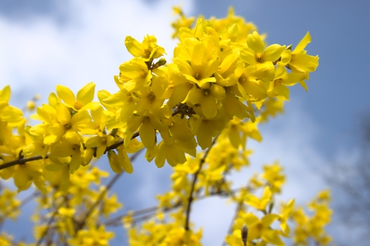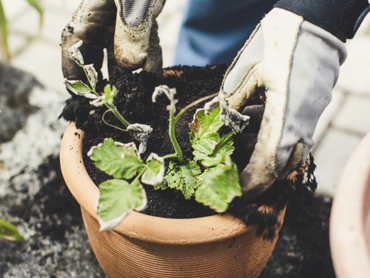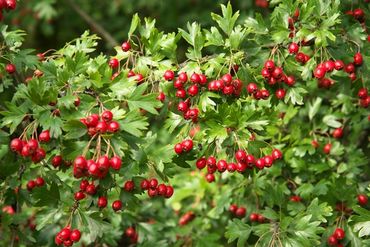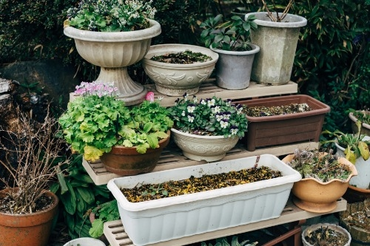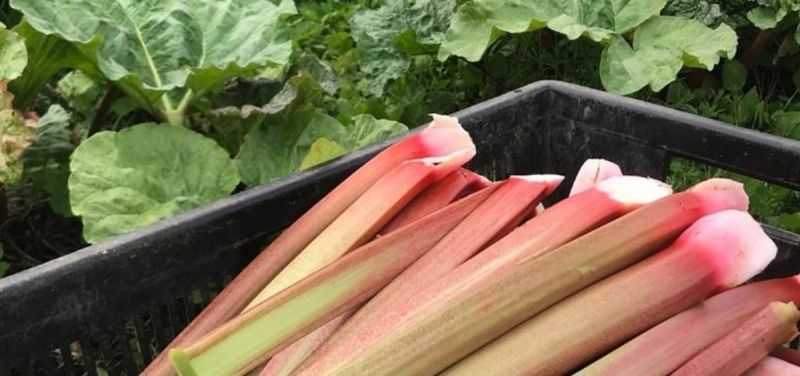 Rhubarb is a herbaceous perennial with thick, pink-red stems and large green leaves. When the stalks are eaten raw, rhubarb stems have a very tart flavour, but if cooked and sweetened, it’s a delicious and nutritious garden fruit.
Rhubarb is a herbaceous perennial with thick, pink-red stems and large green leaves. When the stalks are eaten raw, rhubarb stems have a very tart flavour, but if cooked and sweetened, it’s a delicious and nutritious garden fruit.
Here at Carpenter’s Nursery, we love rhubarb – and we especially love rhubarb crumble! It’s super easy to grow in the garden, and even if you don’t like the taste of rhubarb, it looks attractive too.
Fresh Rhubarb From the Field to Your Table
There are two rhubarb crops each year. The first crop is known as ‘forced’ rhubarb because it’s grown under pots. This has a delicate flavour.
The second crop can be grown outdoors, which makes it perfect for the garden. This is the rhubarb you are probably most familiar with – the stalks are deep red and the leaves are bright, vivid green.
We grow rhubarb at Carpenter’s Nursery, so head on over to our Farm Shop to pick some up for your puddings. Our rhubarb harvest is fresh and goes straight from the field to your table, unlike the rhubarb you might see at the supermarket.
Cooking Rhubarb
Rhubarb can be cooked in many different ways. Chop it up into large chunks and simmer it in a pan with sugar to taste. Once it’s soft, drain the water away and serve with fresh cream or custard. Did you know you can also roast rhubarb?
Forced rhubarb is softer, so it only takes around 15 minutes to cook. Maincrop rhubarb takes around 20 minutes to cook.
As we’ve already mentioned, rhubarb is also a delicious ingredient for crumbles, either on its own or with apple, raspberry, and ginger. Fresh ginger really brings out the flavour of rhubarb, so if you haven’t given this a go before now, we recommend that you try it!
Jams and Chutneys
Rhubarb is also an excellent ingredient in jams and chutneys.
Whilst we all love rhubarb puddings, it makes a lovely accompaniment to savoury dishes too. Thanks to its tart flavour, it goes well with pork and duck. Finely chop some rhubarb and cook in a tray with some pork chops or duck breasts.
Our rhubarb is available from March until June. We recommend that you use your rhubarb quickly once you take it home, as it soon begins to wilt once the stems have been cut. Store it in the fridge and cook within 2-3 days. Cooked rhubarb can be cooled and popped in the freezer for a treat later in the year.
How to Grow Rhubarb
Rhubarb needs a nice sunny, well-drained spot in the garden. Dig in lots of well-rotted manure before you plant it. Keep the area around the crown covered in mulch to prevent weeds from taking over, but don’t cover the plant itself. Rhubarb needs plenty of water during dry spells. When the leaves die back in autumn, remove them to the crown is exposed – this ensures a fresh crop the following year.
Love rhubarb? Pop on over to Carpenter’s Nursery and pick up some for tea!

